|
|
|
|
New Books in the Library Science Collection @ the State Library
| |
|
|
|
 VT Libraries Add Videoconferencing Capability VT Libraries Add Videoconferencing Capability
Fourteen Vermont libraries across the state are now offering videoconferencing, thanks to a grant from Google. The addition of videoconferencing will allow library users to connect with, and broadcast to, the world at large. Videoconferencing allows people to connect with voice and video within the state and beyond our borders. Libraries will also experiment with importing programming or making existing programs available on YouTube via Google Hangout. The videoconferencing capability was made possible through a donation of $77,000 by Internet giant Google. Read more
|
|
Lesak Appointed to Board of Libraries
Governor Peter Shumlin has appointed Anne Lesak as the newest member of the Vermont Board of Libraries. Lesak, who lives in Burlington, is the Project Coordinator of Benchmarks for a Better Vermont and is a former trustee of the Rutland Free Library. She replaces Linda Williamson of Windsor who completed her second term on the Board in June. Members of the Board of Libraries include: Bruce Post, Chair (Essex); Deborah Granquist (Weston); Jim Gish (Middlebury); Josh Fitzhugh (Berlin); Lucy Comstock-Gay (New Haven); Ariel Wengroff (Burlington); and Lesak. The next meeting of the Board will take place on September 17 at 10:00 a.m. at the St. Johnsbury Athenaeum. For more information about the Board, see: http://libraries.vermont.gov/libraries/bol.
|
|
September: VT Archaeology Month
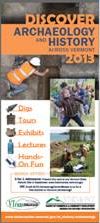 Vermont is always an interesting state, but September may provide us with a totally different appreciation for it. September is Vermont Archaeology Month, full of digs, walking tours, talks, exhibits, and other hands-on fun and learning. Over 30 programs are scheduled and most events are free. State Archaeologist Giovanna Peebles has compiled an online listing of these events. Stacks of Vermont Archaeology Month rack cards are available from her office for libraries to distribute. Email accd.archaeologycenter@state.vt.us or call 802-828-3050 for the cards or more information. Vermont is always an interesting state, but September may provide us with a totally different appreciation for it. September is Vermont Archaeology Month, full of digs, walking tours, talks, exhibits, and other hands-on fun and learning. Over 30 programs are scheduled and most events are free. State Archaeologist Giovanna Peebles has compiled an online listing of these events. Stacks of Vermont Archaeology Month rack cards are available from her office for libraries to distribute. Email accd.archaeologycenter@state.vt.us or call 802-828-3050 for the cards or more information.
|
|
Role for Public Libraries in VT Health Exchange
 When the Vermont Health Exchange Open Enrollment period begins on October 1, many Vermonters will look to their local library for help. As the only place with free internet access in some Vermont towns, and the community center of so many towns, Vermont's public libraries are certain to receive visits from many people who normally do not use the Internet and may need assistance. Read more When the Vermont Health Exchange Open Enrollment period begins on October 1, many Vermonters will look to their local library for help. As the only place with free internet access in some Vermont towns, and the community center of so many towns, Vermont's public libraries are certain to receive visits from many people who normally do not use the Internet and may need assistance. Read more
|
|
State Library Public Computer, Resources,
Now More Accessible
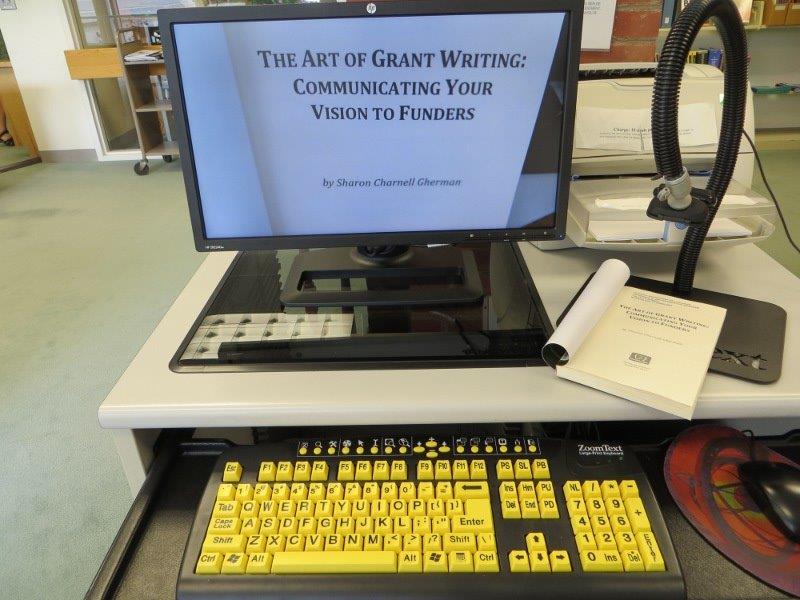 Vermonters, and others, with visual impairments can now make better use of the resources at the State Library in Montpelier, as a public computer has been outfitted with ZoomText Magnifier/Reader software, a large print, high contrast keyboard, document camera, and headphones. The software, produced by Ai Squared, based in Manchester Center, VT, can enlarge the text on a computer screen up to 36x, and can read the screen aloud. Among the electronic resources now more accessible in the State Library are Westlaw, the Foundation Directory Online, Ancestry.com Vermonters, and others, with visual impairments can now make better use of the resources at the State Library in Montpelier, as a public computer has been outfitted with ZoomText Magnifier/Reader software, a large print, high contrast keyboard, document camera, and headphones. The software, produced by Ai Squared, based in Manchester Center, VT, can enlarge the text on a computer screen up to 36x, and can read the screen aloud. Among the electronic resources now more accessible in the State Library are Westlaw, the Foundation Directory Online, Ancestry.com
(International Edition), and Sanborn Fire Insurance Maps. The increased accessibility is not limited to electronic resources, as the document camera can be used to enlarge text from a book or other printed image. This image, too, can be read aloud, or even saved as an audio file on a flash drive (bring your own). The assistive technology was purchased for the State Library by public donations to the Department of Libraries' Special Services Unit, Vermont's Library for the Blind & Physically Handicapped.
|
|
Checklist Aids ADA Renovations
Determining what changes should be made to get a 100-year-old library, or any public building, in line with today's Americans with Disabilities Act (ADA) accessibility standards can be daunting. The first step could be to walk through the building with the ADA Checklist, available at www.ADAchecklist.org. The Checklist was featured at a field training workshop held at Bradford Public Library by the New England ADA Center, a Project of the Institute for Human Centered Design, Boston. Library Director Debra Tinkham and several Bradford trustees participated in the training session to examine the specific needs of their library. Other participants represented two other Vermont libraries, the Vermont Department of Libraries, a library system in New Hampshire, and Disability Rights Vermont. Read more
|
|
RDA: It's Probably Already in Your Library Catalog
We are now just over four months into the official RDA (Resource Description and Access) cataloging rules era, and, chances are, many of you reading this have not noticed much of a change. There are a couple of reasons for this. Read more
|
|
2013 Boston Globe-Horn Book Award
Winners Announced
One of the most prestigious awards that an author or illustrator of children's books can win is a Boston Globe-Horn Book Award. The winners of this year's awards were announced at Book Expo America. They are:
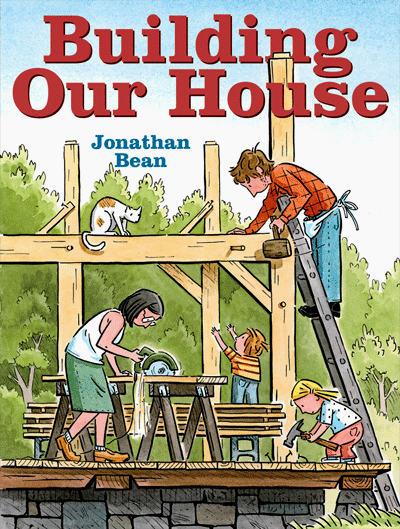 PICTURE BOOK WINNER: PICTURE BOOK WINNER:
Building Our House written and illustrated by Jonathan Bean (Farrar Straus and Giroux)
A young girl narrates her family's move from the city to the country, where they have bought a piece of land and live in a trailer while they build a house from the ground up, with help from relatives and friends.
Read more
|
|
ALA Recommends More Great Websites for Kids
The Association for Library Service to Children, a division of the American Library Association, maintains a list of recommended websites for kids ages birth to 14, and it has recently updated that list. The websites they choose are considered the best ones for children, outstanding in both content and conception. There is a very wide range of subjects including curriculum related sites and ones that are just for fun. Libraries are encouraged to link to this list and to share these great sites with parents, teachers and kids. Check it out at http://gws.ala.org/.
|
|
Focus on VOL: Powerspeak Languages
 Among the electronic resources available through the Vermont Online Library (VOL) is an interactive, on-demand foreign language program called Powerspeak. It's ideal for students, business people, leisure travelers, ESL patrons, and anyone who simply wants to experience the cognitive benefits of learning a new language. Powerspeak provides introductory level training in 8 foreign languages plus English for speakers of Spanish and Mandarin. Read more Among the electronic resources available through the Vermont Online Library (VOL) is an interactive, on-demand foreign language program called Powerspeak. It's ideal for students, business people, leisure travelers, ESL patrons, and anyone who simply wants to experience the cognitive benefits of learning a new language. Powerspeak provides introductory level training in 8 foreign languages plus English for speakers of Spanish and Mandarin. Read more
|
It's a Boy!
 It is our pleasure to announce the arrival of Gage Wilson, born on June 14 in St. Johnsbury. Gage is the son of Brittney Wilson (Executive Assistant to the State Librarian at the Department of Libraries) and her husband Bo. Brittney, currently on maternity leave, will return to work full time in early September. Congratulations to Brittney and Bo! It is our pleasure to announce the arrival of Gage Wilson, born on June 14 in St. Johnsbury. Gage is the son of Brittney Wilson (Executive Assistant to the State Librarian at the Department of Libraries) and her husband Bo. Brittney, currently on maternity leave, will return to work full time in early September. Congratulations to Brittney and Bo!
|
This month we thought we'd check in with library trustees. No surprise, these people read avidly.
 Jan Mitchell-Love of the Rockingham Free Public Library read Chinatown Beat by Henry Chang for a CCV course she teaches on American Detective Fiction. She found the book's appeal for mystery aficionados and readers who enjoy learning about other cultures. "New York's Chinatown permeates this novel's pages and is almost another character in this elegantly written mystery, an award-winning first (2006) in the series." Read more Jan Mitchell-Love of the Rockingham Free Public Library read Chinatown Beat by Henry Chang for a CCV course she teaches on American Detective Fiction. She found the book's appeal for mystery aficionados and readers who enjoy learning about other cultures. "New York's Chinatown permeates this novel's pages and is almost another character in this elegantly written mystery, an award-winning first (2006) in the series." Read more
|
|
|
|
|
|
ONLY COMPLETE ARTICLES BEYOND THIS POINT
|
 VT Libraries Add Videoconferencing Capability VT Libraries Add Videoconferencing Capability Fourteen Vermont libraries across the state are now offering videoconferencing, thanks to a grant from Google. The addition of videoconferencing will allow library users to connect with, and broadcast to, the world at large. Videoconferencing allows people to connect with voice and video within the state and beyond our borders. Libraries will also experiment with importing programming or making existing programs available on YouTube via Google Hangout. The videoconferencing capability was made possible through a donation of $77,000 by Internet giant Google.
"Getting around in Vermont can be tough," said Head of Google Community Affairs Matt Dunne. "These videoconferencing facilities in our libraries are a natural fit. They allow Vermonters to connect with one another without lengthy drive-times. They also allow Vermonters to connect with the diverse cultural offerings that exist outside our borders."
The 14 libraries were chosen based on a variety of factors including geographic location, population density and Internet speed, and all are up and running with staff trained to help Vermonters get started.
"We're planning an entire week's worth of activity around this equipment," said Rutland Free Library Assistant Director Randal Smathers. "We want to be sure that our community knows that this incredible resource is available to them, and for them to really start thinking about the possibilities."
Library patrons will be able to connect and collaborate with anyone using conventional videoconferencing equipment and applications like Google Hangout or Skype.
The following libraries will have the new service:
Martha Canfield Library, Arlington
Midstate Library Service Center, Berlin
Bradford Public Library, Bradford
Brooks Memorial Library, Brattleboro
Fletcher Free Library Burlington
Cobleigh Public Library, Lyndonville
Ilsley Public Library, Middlebury
Kellogg-Hubbard Library, Montpelier
Morristown Centennial Library, Morrisville
Goodrich Memorial Library, Newport
Rutland Free Library, Rutland
St Albans Free Library, St Albans
Dorothy Alling Memorial Library, Williston
Norman Williams Library, Woodstock
Back to top
|
 Role for Public Libraries in VT Health Exchange Role for Public Libraries in VT Health Exchange When the Vermont Health Exchange Open Enrollment period begins on October 1, many Vermonters will look to their local library for help. As the only place with free internet access in some Vermont towns, and the community center of so many towns, Vermont's public libraries are certain to receive visits from many people who normally do not use the Internet and may need assistance.
Over the past year, the Department of Libraries (VTLIB) has been working with Vermont Health Connect to assure that public libraries are armed with the information they need to serve their patrons during a time of change. Starting in August, the VTLIB will host webinars led by Vermont Health Connect, bringing information to the libraries and keeping communication flowing. Public libraries will have access to speakers for local forums, handouts with enrollment information and links to the Vermont Health Connect website. For more information on the Open Enrollment and the Vermont Health Connect, visit their website at: http://vermonthealthconnect.org/.
Back to top
|
Checklist Aids ADA Renovation
Determining what changes should be made to get a 100-year-old library, or any public building, in line with today's Americans with Disabilities Act (ADA) accessibility standards can be daunting. The first step could be to walk through the building with the ADA Checklist, available at www.ADAchecklist.org. The Checklist was featured at a field training workshop held at Bradford Public Library by the New England ADA Center, a Project of the Institute for Human Centered Design, Boston. Library Director Debra Tinkham and several Bradford trustees participated in the training session to examine the specific needs of their library. Other participants represented two other Vermont libraries, the Vermont Department of Libraries, a library system in New Hampshire, and Disability Rights Vermont.
Armed with tape measure, smart level, and door pressure gauge, the group examined the library entrance, service areas, and bathrooms. While some fixes would be major, some are not so costly. The full title, "ADA Checklist for Readily Achievable Barrier Removal," indicates that recognition that some improvement can be made relatively easily is part of the goal.
The New England ADA Center invites questions on the ADA at 1-800-949-4232, or adainfo@NewEnglandADA.org. The Center holds a training session annually in each of the states it covers; last year's Vermont training was conducted in a recreation facility. The Vermont Community Development Program also had a presence at the workshop, to make participants aware of its Access Modification Grants and Planning Grants, which can aid public buildings in making ADA improvements. For more information on these, contact Lisa Ryan at lisa.ryan@state.vt.us.
Back to top
|
 RDA: It's Probably Already in Your Library Catalog RDA: It's Probably Already in Your Library Catalog We are now just over four months into the official RDA (Resource Description and Access) cataloging rules era, and, chances are, many of you reading this have not noticed much of a change. There are a couple of reasons for this.
First is that RDA is not a radical departure from the previous AACR2 cataloging rules. The nearly 15 year period between when a replacement for AACR2 was first proposed in the late 1990s and Library of Congress' official adaptation of RDA on March 31, 2013, created a lot of expectations and anxiety about RDA. RDA unintentionally was built up to seem like more of a transformation than it actually is. Though RDA is just a few MARC field changes for most of us, it is a real improvement over AACR2, offering a flexible cataloging standard that can grow with advances in the way we handle and ingest information.
The most noticeable differences with RDA are the new 336, 337, and 338 fields. Catalogers may have seen these in records that they are importing into their catalogs. These fields replace the AACR2 "General Material Designation (GMD). The GMD appears at the end of the 245 title field in subfield h in AACR2 records, and typically looks something like this:
245 00 2002 Vermont rivers report $h [electronic resource].
RDA uses the 336-338 fields to more accurately describe how the work is manifested in a given item. In this case, the AACR2 "electronic resource" could be more accurately described in RDA as:
336 $a text $2 rdacontent
337 $a computer $2 rdamedia
338 $a computer disc $2 rdacarrier
Instead of wondering with AACR2 what the "electronic resource" is, what equipment is needed to read it, and what medium it is on, RDA explains all of those things. It is a text document (336), readable on a computer (337), on a computer disc (338).
Another field to note is that RDA moves the publication information from the MARC 260 field to the MARC 264 field. These changes-the 336-338 and 264 fields-are the most noticeable, common adjustments with RDA. The key to using these fields is to make sure that the local online public access catalog (OPAC) is displaying them properly.
Speaking of OPACS, the second reason many of us haven't noticed a change with RDA is that most OPACs have been slow to exploit the advantages of RDA. This is going to be a gradual transformation, coming over a number of years. As new software is designed that incorporates linked data into cataloging records, RDA will be part of that revolution. For now, as mentioned above, make sure that your existing system displays the 336-338 and 364 fields properly.
RDA is a forward looking, much more open-ended system than AACR2, and promises to be part of some exciting developments in cataloging in the next several years. Those records already in your catalog today may be part of that change tomorrow.
For more information about RDA, consult this excellent video overview from ALCTS:
http://www.youtube.com/watch?v=rZ7ePkTc3lg&list=PL1AAFB573158DC4A1. There is also a series of videos from ALCTS, accessible here: http://www.youtube.com/playlist?list=PL1AAFB573158DC4A1.
Back to top
|
 2013 Boston Globe-Horn Book Award Winners Announced 2013 Boston Globe-Horn Book Award Winners Announced
One of the most prestigious awards that an author or illustrator of children's books can win is a Boston Globe-Horn Book Award. The winners of this year's awards were announced at Book Expo America. They are:
 PICTURE BOOK WINNER: PICTURE BOOK WINNER:
Building Our House written and illustrated by Jonathan Bean (Farrar Straus and Giroux)
A young girl narrates her family's move from the city to the country, where they have bought a piece of land and live in a trailer while they build a house from the ground up, with help from relatives and friends.
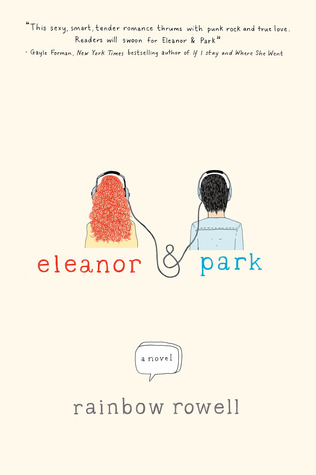 FICTION WINNER: FICTION WINNER:
Eleanor & Park by Rainbow Rowell (St. Martin's Griffin, an imprint of Macmillan)
Set over the course of one school year in Omaha in1986, this is the story of two star-crossed misfits--smart enough to know that first love almost never lasts, but brave and desperate enough to try.
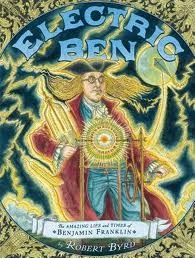 NONFICTION WINNER: NONFICTION WINNER:
Electric Ben: The Amazing Life and Times of Benjamin Franklin written and illustrated by Robert Byrd (Dial Books for Young Readers, an imprint of Penguin Group)
Byrd divides Franklin's life into seventeen often whimsically labeled double-page spreads, highlighting his scientific, literary, and political endeavors in a fresh new way.
PICTURE BOOK HONOR WINNERS:
* Open This Little Book by Jesse Klausmeier, illustrated by Suzy Lee (Chronicle Books)
* Black Dog written and illustrated by Levi Pinfold (Templar Books, an imprint of Candlewick Press)
FICTION HONOR WINNERS:
* Seraphina by Rachel Hartman (Random House Books for Young Readers)
* A Corner of White by Jaclyn Moriarty (Arthur A. Levine Books, an imprint of Scholastic Inc.)
NONFICTION HONOR WINNERS:
* Dreaming Up: A Celebration of Building written and illustrated by Christy Hale (Lee & Low Books)
* Hand in Hand: Ten Black Men Who Changed America by Andrea Davis Pinkney and illustrated by Brian Pinkney (Disney/Jump at the Sun Books, an imprint of Disney Book Group)
Back to top
|
|
 Focus on VOL: Powerspeak Languages Focus on VOL: Powerspeak Languages
Among the electronic resources available through the Vermont Online Library (VOL) is an interactive, on-demand foreign language program called Powerspeak. It's ideal for students, business people, leisure travelers, ESL patrons, and anyone who simply wants to experience the cognitive benefits of learning a new language. Powerspeak provides introductory level training in 8 foreign languages plus English for speakers of Spanish and Mandarin. The languages are:
Spanish
French
German
Mandarin Chinese
ESL for Spanish Speakers
ESL for Mandarin Speakers
Russian
Italian
Japanese
Korean
Powerspeak provides a learning experience that uses audio, video and interactive lessons. Activities include: Matching Pictures, Listen, Record and Compare, Audio Matching, Spoken Practice, Pictures, Walk-Through, Check Your Understanding, and much more.
As with all VOL resources, Powerspeak is available through many Vermont public, school and academic libraries and through those libraries users can access it from anywhere with Internet access. For more information contact your library or visit http://www.vtonlinelib.org/ to locate a library near you.
Back to top
|
 
This month we thought we'd check in with library trustees. No surprise, these people read avidly.
 Jan Mitchell-Love of the Rockingham Free Public Library read Chinatown Beat by Henry Chang for a CCV course she teaches on American Detective Fiction. She found the book's appeal for mystery aficionados and readers who enjoy learning about other cultures. "New York's Chinatown permeates this novel's pages and is almost another character in this elegantly written mystery, an award-winning first (2006) in the series." Jan Mitchell-Love of the Rockingham Free Public Library read Chinatown Beat by Henry Chang for a CCV course she teaches on American Detective Fiction. She found the book's appeal for mystery aficionados and readers who enjoy learning about other cultures. "New York's Chinatown permeates this novel's pages and is almost another character in this elegantly written mystery, an award-winning first (2006) in the series."
 Beverly Fonner read Sonia Sotomayor's memoir, My Beloved World, and found the new Supreme Court justice "is an amazing woman whose ambition, focus and intelligence lovingly nurtured by a caring (although dysfunctional) family enabled her to achieve her heady ambition to become a judge. Overcoming a background of poverty and living in the projects of the Bronx coupled with a diagnosis of diabetes as a child are mentioned by Sotomayor only as conditions of her life--not disabling factors. A truly inspirational read." Bev serves on the Wilder Memorial Library board in Weston. Beverly Fonner read Sonia Sotomayor's memoir, My Beloved World, and found the new Supreme Court justice "is an amazing woman whose ambition, focus and intelligence lovingly nurtured by a caring (although dysfunctional) family enabled her to achieve her heady ambition to become a judge. Overcoming a background of poverty and living in the projects of the Bronx coupled with a diagnosis of diabetes as a child are mentioned by Sotomayor only as conditions of her life--not disabling factors. A truly inspirational read." Bev serves on the Wilder Memorial Library board in Weston.
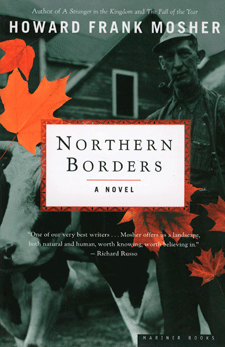 David Patriquin likes Howard Frank Mosher's Northern Borders. "This 1994 opus is filled with descriptions - of people, places and their complex interactions all reported through the eyes of a boy growing up in the farm home setting of his grandparents. Through my early teen years I lived on a run-down farm with neighbors much like those Mosher describes in his book. Oh, the memories he stirred up in my mind. That is one of the great joys I find in reading books." Dave is a trustee for the Lydia Taft Pratt Library in Dummerston. David Patriquin likes Howard Frank Mosher's Northern Borders. "This 1994 opus is filled with descriptions - of people, places and their complex interactions all reported through the eyes of a boy growing up in the farm home setting of his grandparents. Through my early teen years I lived on a run-down farm with neighbors much like those Mosher describes in his book. Oh, the memories he stirred up in my mind. That is one of the great joys I find in reading books." Dave is a trustee for the Lydia Taft Pratt Library in Dummerston.
 Laurel Stanley, trustee at the Danville Public Library, read The Whole Fromage by Kathe Lison. "The author does a nice job making her research interesting and describing people she meets, background history and of course, delicious cheeses. I read it in preparation for my part in our monthly cooking group, as we were doing French cooking and I was supplying French cheeses." After reading the book, Laurel visited a Vermont cheese shop to select four varieties to enjoy as a cheese tray dessert. Laurel Stanley, trustee at the Danville Public Library, read The Whole Fromage by Kathe Lison. "The author does a nice job making her research interesting and describing people she meets, background history and of course, delicious cheeses. I read it in preparation for my part in our monthly cooking group, as we were doing French cooking and I was supplying French cheeses." After reading the book, Laurel visited a Vermont cheese shop to select four varieties to enjoy as a cheese tray dessert.
Back to top
|
 New in the Library Science Collection at the Vermont State Library New in the Library Science Collection at the Vermont State Library
These items may be borrowed from the State Library. Many of these titles are located in the Library Science Collection, and others are available through the Children's Book Exhibit Center.
ALA Glossary of Library and Information Science. American Library Association, 2013.
Burke, John. Neal-Schuman Library Technology Companion: A Basic Guide for Library Staff. Neal-Schuman, an imprint of the American Library Association, 2013.
Coleman, Tina, and Peggie Llanes. Teen Craft Projects 2. American Library Association, 2013.
Crawford, Walt. Give Us a Dollar and We'll Give You Back Four: Public Library Funding and Benefits. Cites & Insights Books, 2012.
Dietzel-Glair, Julie. Books in Motion: Connecting Preschoolers with Books Through Art, Games, Movement, Music, Playacting, and Props. Neal-Schuman, an imprint of the American Library Association, 2013.
Dorothy Canfield Fisher Children's Book Award Ceremony [videorecording] prepared and presented by the Vermont Department of Libraries. RETN Media Center, 2013.
Farmer, Lesley S. J. Library Services for Youth with Autism Spectrum Disorders. American Library Association, 2013.
Ghoting, Saroj Nadkarni, and Pamela Martin-Díaz. Storytimes for Everyone!: Developing Young Children's Language and Literacy. American Library Association, 2013.
Hopkins, Carol Garnett. Artsy Toddler Storytimes: A Year's Worth of Ready-to-Go Programming. Neal-Schuman, an imprint of the American Library Association, 2013.
Jones, Ed. RDA and Serials Cataloging. American Library Association, 2013.
Lear, Brett W. Adult Programs in the Library. American Library Association, 2013.
Naidoo, Jamie Campbell, and Sarah Park Dahlen. Diversity in Youth Literature: Opening Doors Through Reading. American Library Association, 2013.
Tumbleson, Beth E. Embedding Librarianship in Learning Management Systems: a How-To-Do-It Manual for Librarians. Neal-Schuman, an imprint of the American Library Association, 2013.
Velasquez, Diane. Library Management 101: A Practical Guide. American Library Association, 2013.
Walters, Suzanne. Breakthrough Branding: Positioning Your Library to Survive and Thrive. Neal-Schuman, an imprint of the American Library Association, 2013.
Back to top
|

|
|
|
|
|
|